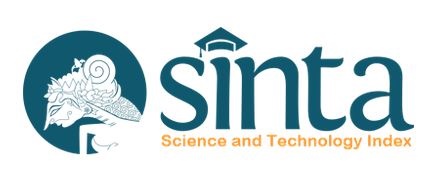Land Value Modeling Using Log-Linear Multiple Regression
DOI:
https://doi.org/10.12962/geoid.v20i1.2725Keywords:
Infrastructure, Land valuation, Statistical test, Tambak Osowilangun, Teluk Lamong PortAbstract
Land value is an assessment of land based on its economic potential. It is influenced by various factors, including public facilities, road networks, and proximity to supporting infrastructure. Land value information plays a crucial role in infrastructure development, budget planning, and site selection for new infrastructure projects. According to the Surabaya City Regional Spatial Plan (Rencana Tata Ruang Wilayah – RTRW) 2014–2034, the development of Teluk Lamong Port, located in the Tambak Osowilangun Subdistrict, aims to enhance national logistics efficiency by alleviating traffic congestion at Tanjung Perak Port, which has exceeded its maximum capacity. This development is expected to affect land values in the subdistrict. Therefore, an objective land valuation is necessary, which can be achieved through modeling. This study employs a Multiple Linear Regression (MLR) approach with a log-lin model to determine land values. The modeling was conducted using 87 land sale and purchase transaction records, which were adjusted based on Circular Letter of the Directorate General of Taxes No. SE-55/PJ.6/1999. The independent variables used in the model include Land Area (LT), Land Use (PL), Distance to Road (JJ), Distance to Port (JPTL), Distance to the Central Business District (JCOP), and Distance to the Terminal (JTTO). The model was evaluated using statistical tests, including the coefficient of determination, partial test, simultaneous test, multicollinearity test, and Coefficient of Variation (CoV) for model evaluation. The resulting land value model is expressed as: Ln NTE = 9.305184 + (1.053730 × PL) + (-0.000450 × JCOP) + (0.000823 × JPTL). The CoV value obtained remains acceptable as it is below 20%, indicating the model's reliability.
Downloads
References
Akbar, B. S. (2020). Pemodelan Nilai Tanah Berdasarkan Data Transaksi Jual Beli Tanah Tahun 2015 s.d. 2019 Di Desa Bejiharjo Kecamatan Karangmojo Kabupaten Gunungkidul D.I. Yogyakarta. Yogyakarta: Program Studi Sarjana Teknik Geodesi Departemen Teknik Geodesi Fakultas Teknik Universitas Gadjah Mada.
Bourassa, S. C., Hoesli, M., & Sun, J. (2003). The price of land and its influence on housing prices. Journal of Urban Economics, 53(1), 1-21. https://doi.org/10.1016/S0094-1190(02)00503-2
Colwell, P. F., & Munneke, H. J. (1997). The structure of urban land prices. Journal of Urban Economics, 41(3), 321-336. https://doi.org/10.1006/juec.1996.2016
Dale, P., & McLaughlin, J. (1999). Land administration. Oxford University Press.
Debrezion, G., Pels, E., & Rietveld, P. (2007). The impact of railway stations on residential and commercial property value: A meta-analysis. The Journal of Real Estate Finance and Economics, 35(2), 161–180. https://doi.org/10.1007/s11146-007-9032-z
Dyah Nirmala Arum Janie, S. M. (2012). Statistik Deskriptif & Regresi Linier Berganda Dengan SPSS. Semarang: Semarang University Press.
Indonesia National Port Master Plan. (2013). Strategic Development of Port Infrastructure in Indonesia. Jakarta: Ministry of Transportation.
Kutner, M. H., Nachtsheim, C. J., Neter, J., & Li, W. (2005). Applied Linear Statistical Models (5th ed.). McGraw-Hill.
Li, X., Liu, Y., & Yang, J. (2018). Intertwining Factors Influencing Land Use Patterns. Journal of Land Use Science, 13(3), 245-260.
Ministry of Transportation. (2012). Annual Transportation Infrastructure Development Report. Jakarta: Government of Indonesia.
Muhammad Ardiansyah and Nafisatus Sania Irbah. 2024. IOP Conf. Ser.: Earth Environ. Sci. 1418 012014. DOI : 10.1088/1755-1315/1418/1/012014
Munshif, S., Jaafar, O., & Noor, N. M. (2017). Land price determinants in urban areas: A case study of Kuala Lumpur. International Journal of Real Estate Studies, 11(2), 23-34.
Pajak, D. J. (1999). Lampiran Surat Edaran DJP. SE-55/PJ.6/1999: https://peraturanpajak.com/wp-content/uploads/2018/02/lampiran-se-55-pj-6-1999.pdf
Pelindo III. (2018). Teluk Lamong Port Performance Report. Jakarta: PT Pelabuhan Indonesia III.
Rahman, M. (2020). Predicting the Influence of Urban Vacant Lots on Neighborhood Property Values. Urban Data Science, 5(2), 123-145.
Rynjani, F. (2015). Land value and its impact on spatial planning in Indonesia. Indonesian Journal of Geography, 47(2), 112-124.
Surabaya Regional Development Report. (2019). Economic Impact of Infrastructure Development in Surabaya. Surabaya: Bappedalitbang Surabaya.
UN-Habitat. (2020). The role of land in sustainable urban development. United Nations Human Settlements Programme.
Williamson, I., Enemark, S., Wallace, J., & Rajabifard, A. (2010). Land administration for sustainable development. Esri Press.
Zhang, X., Wu, Y., & Shen, L. (2019). Infrastructure investment and urban land value: A study of China’s metropolitan areas. Land Use Policy, 85, 299-310. https://doi.org/10.1016/j.landusepol.2019.03.019








